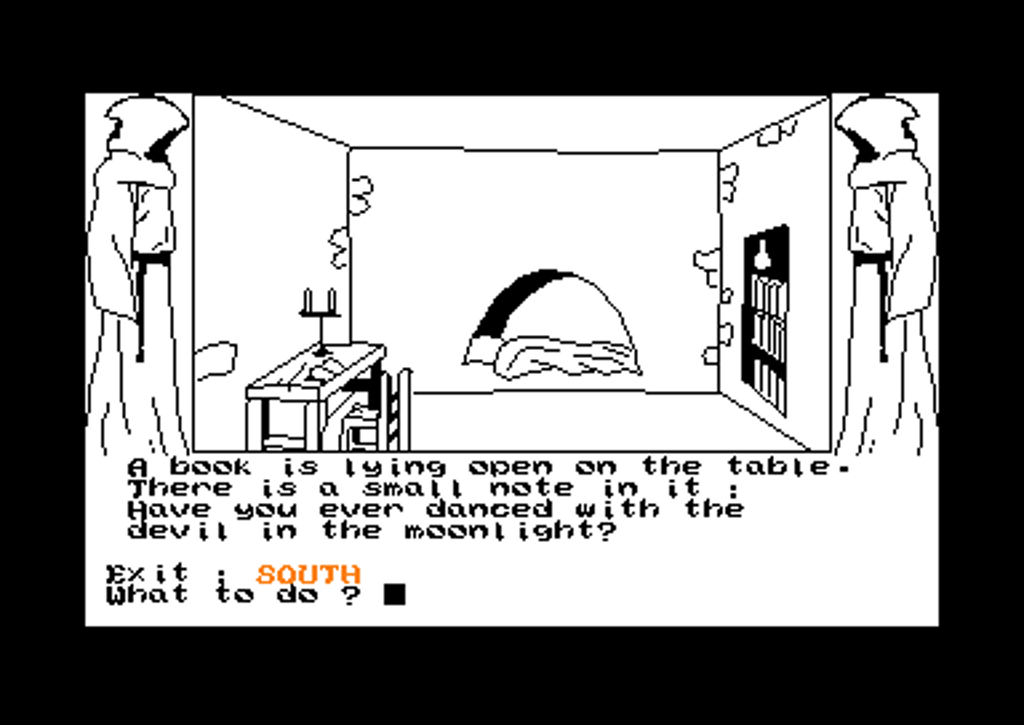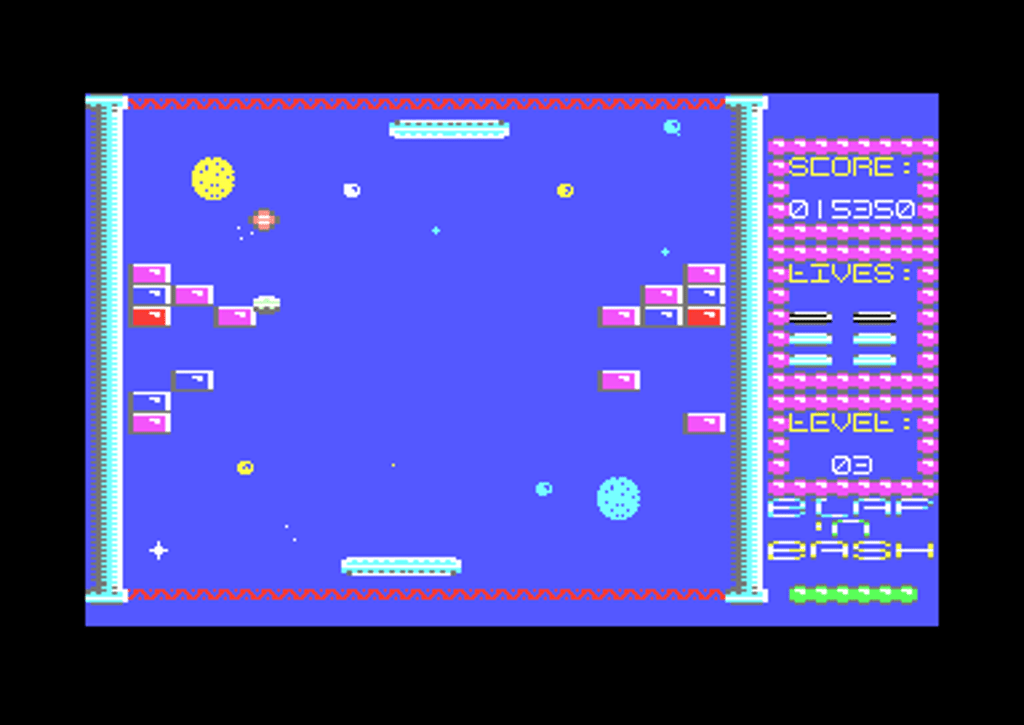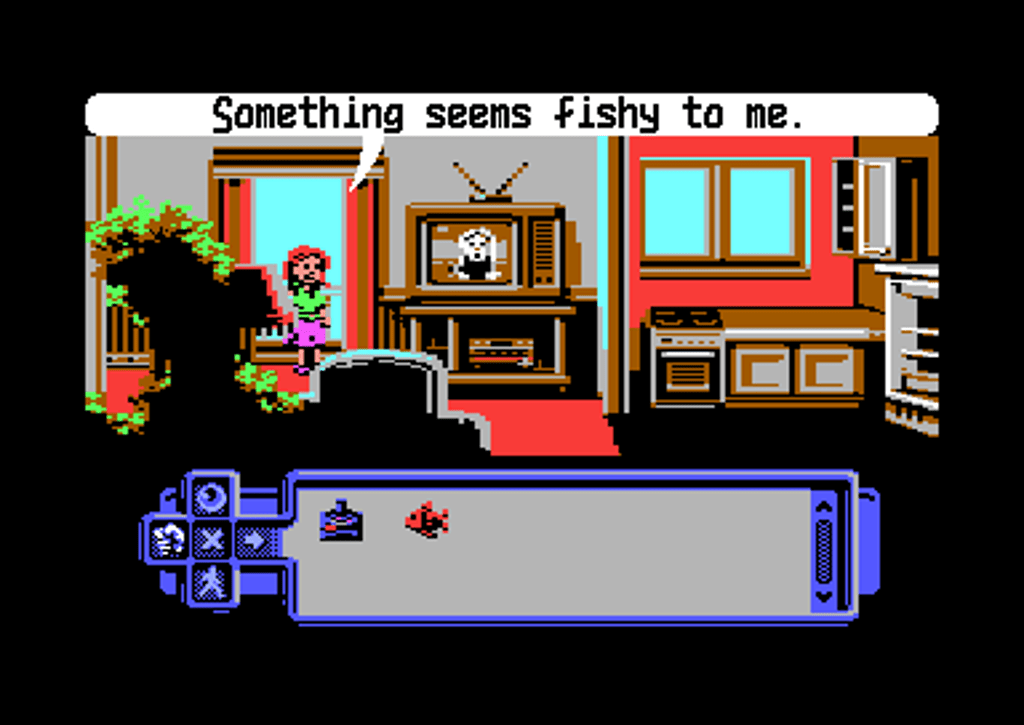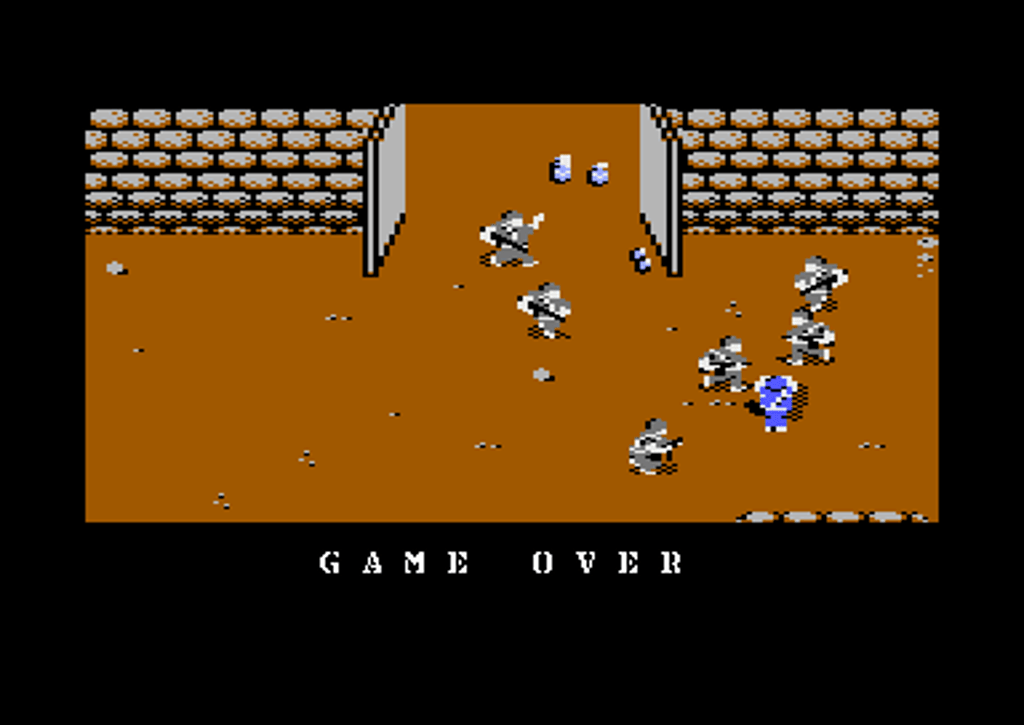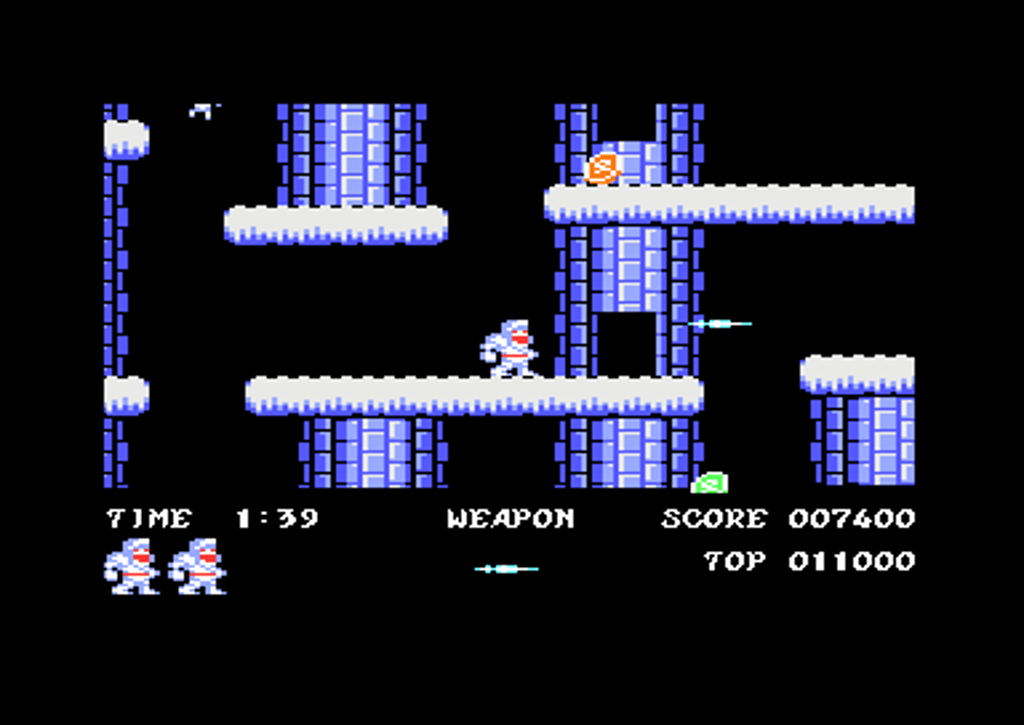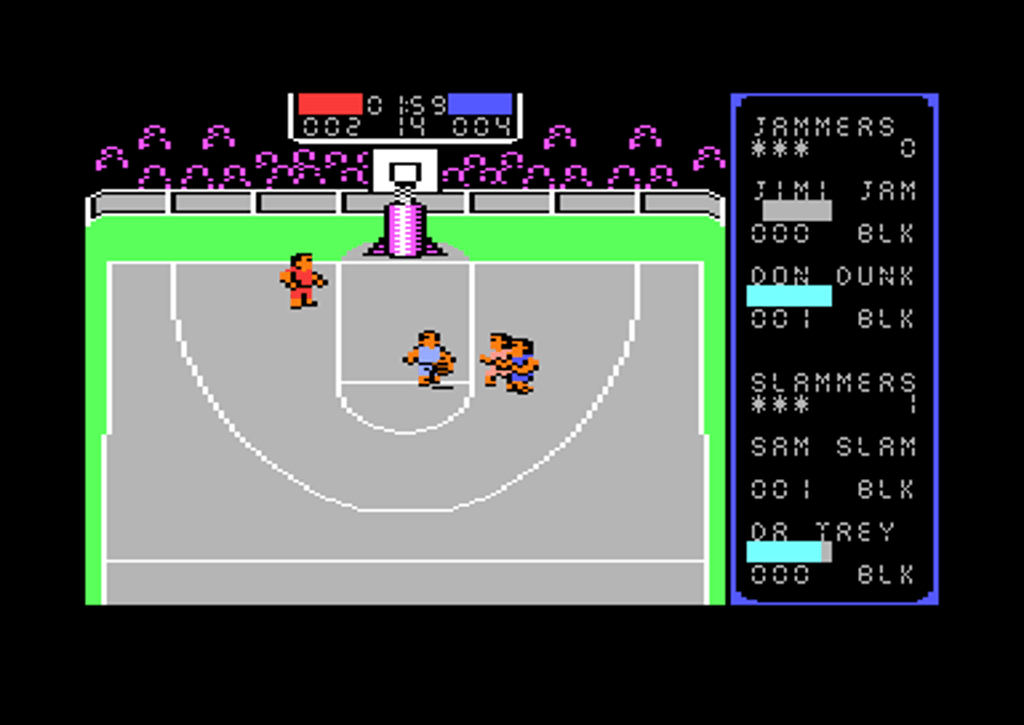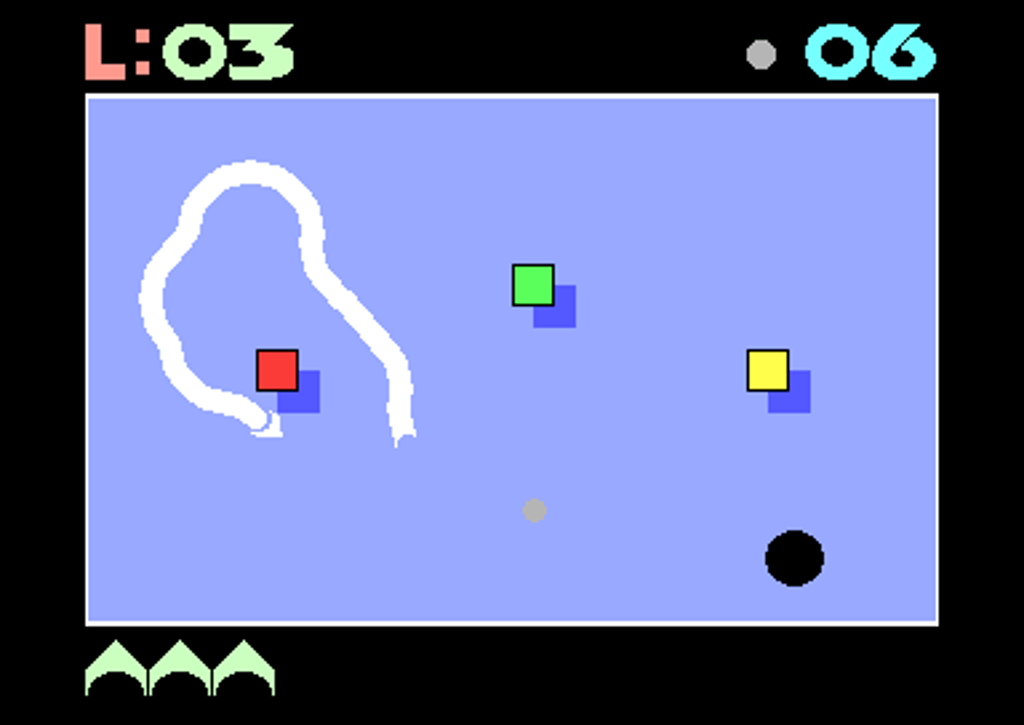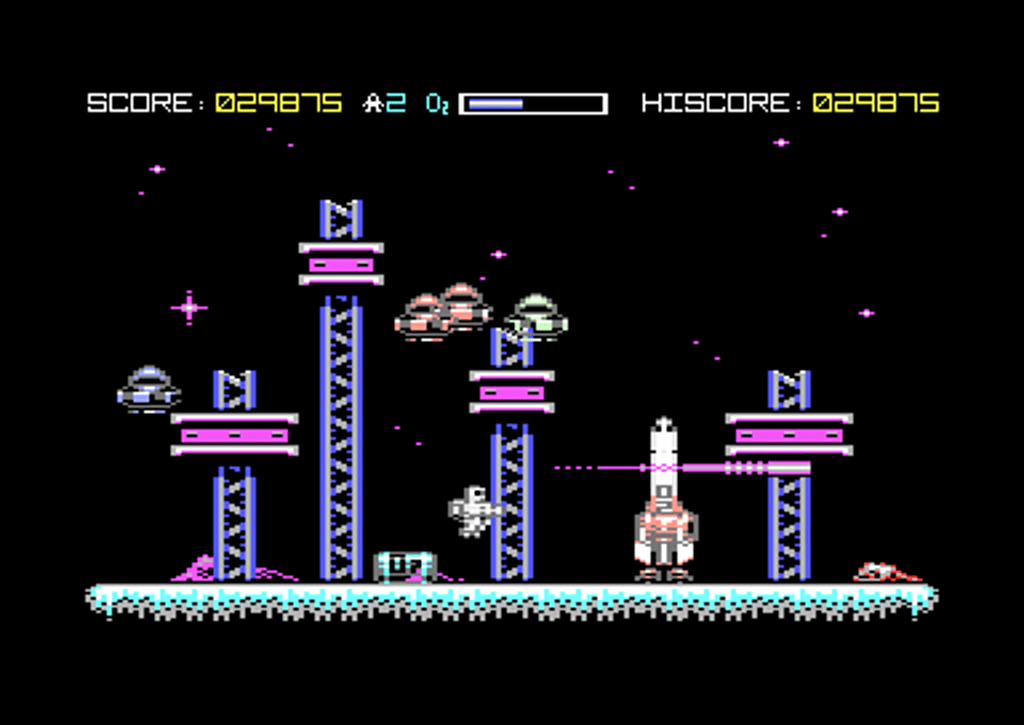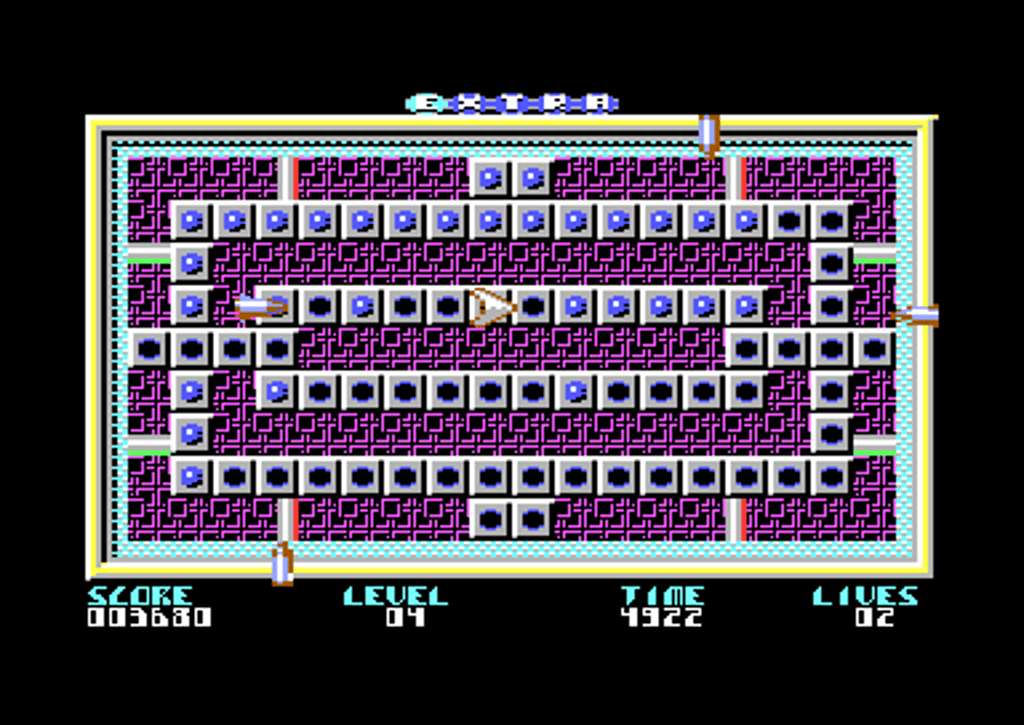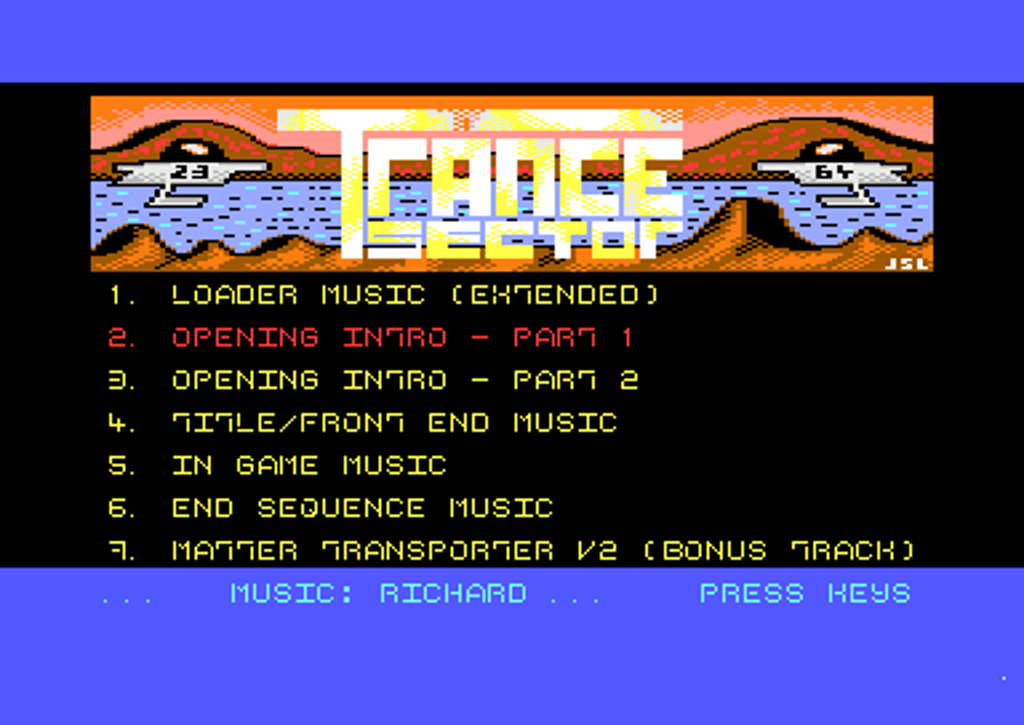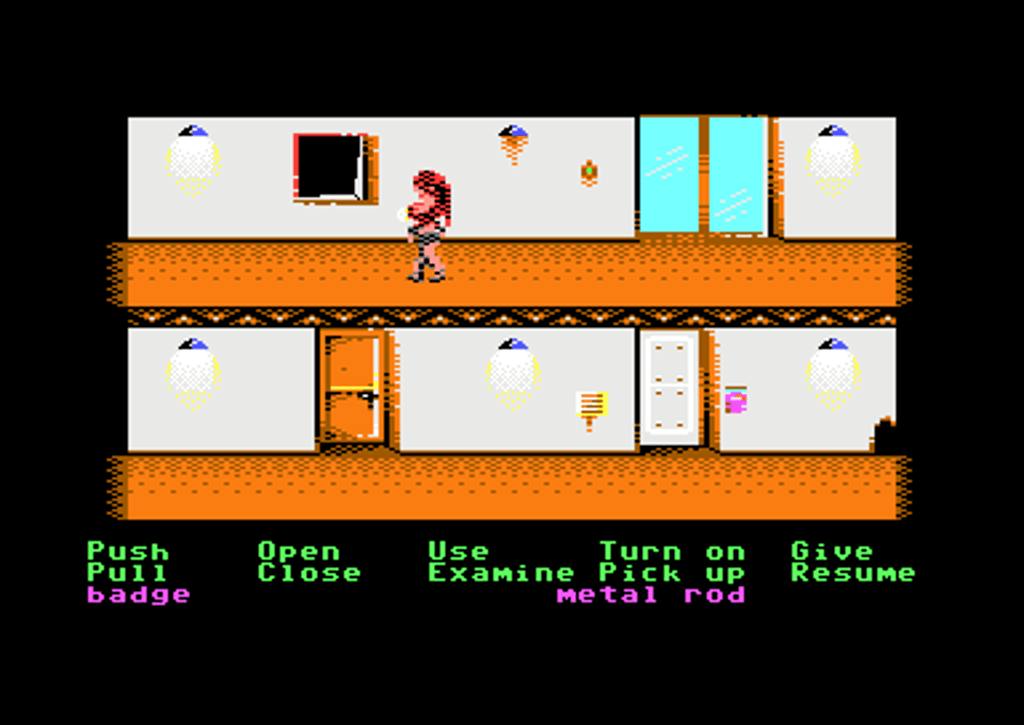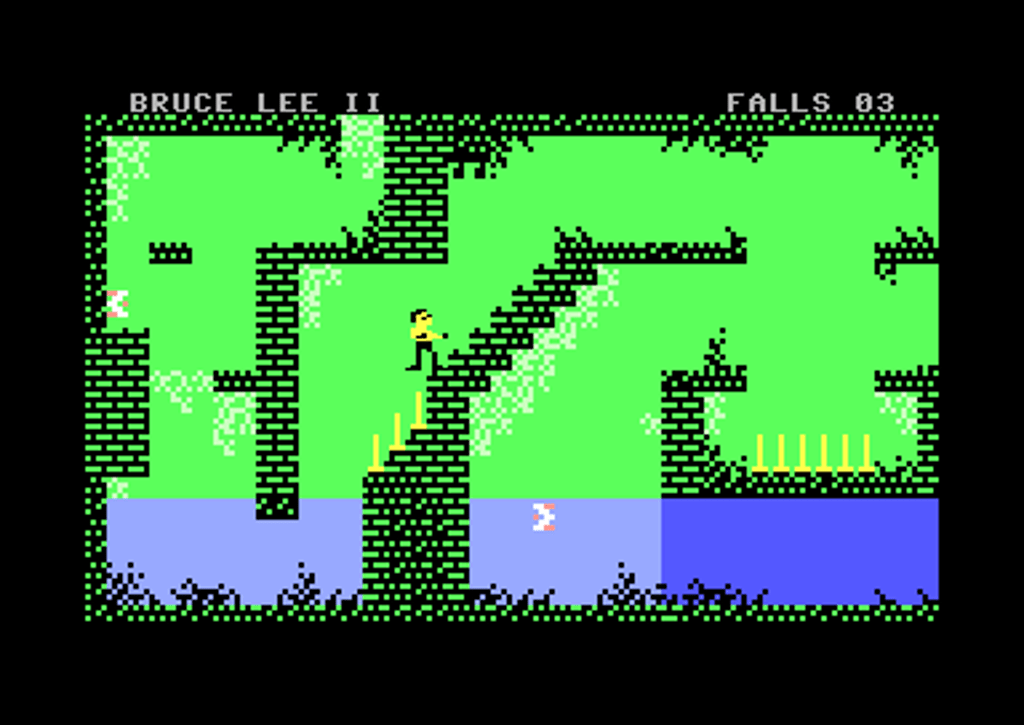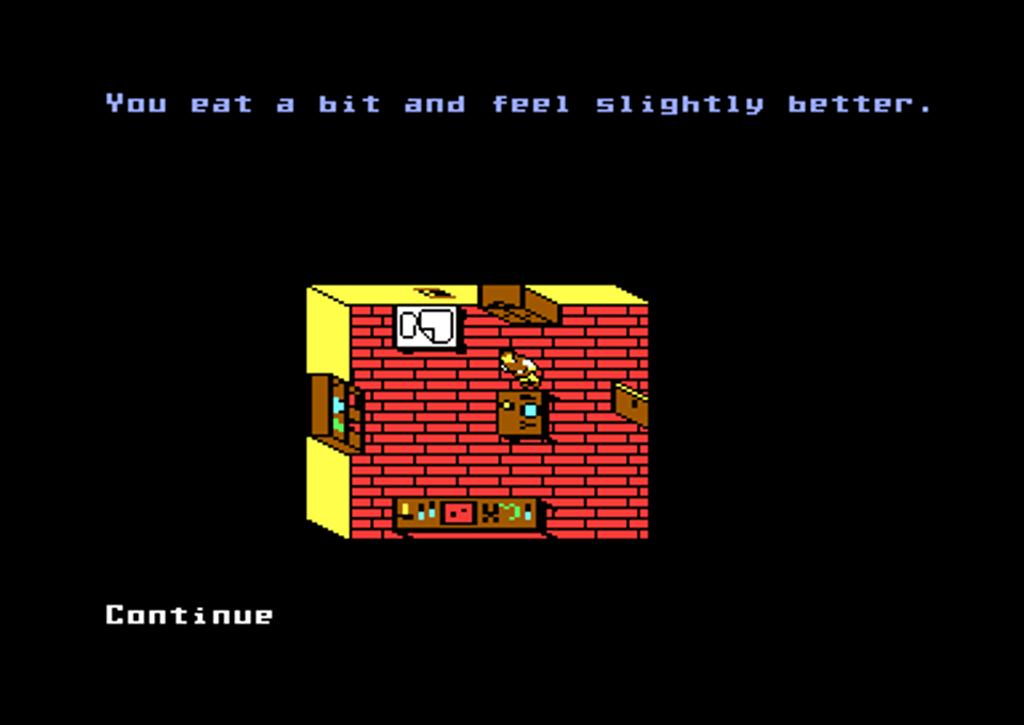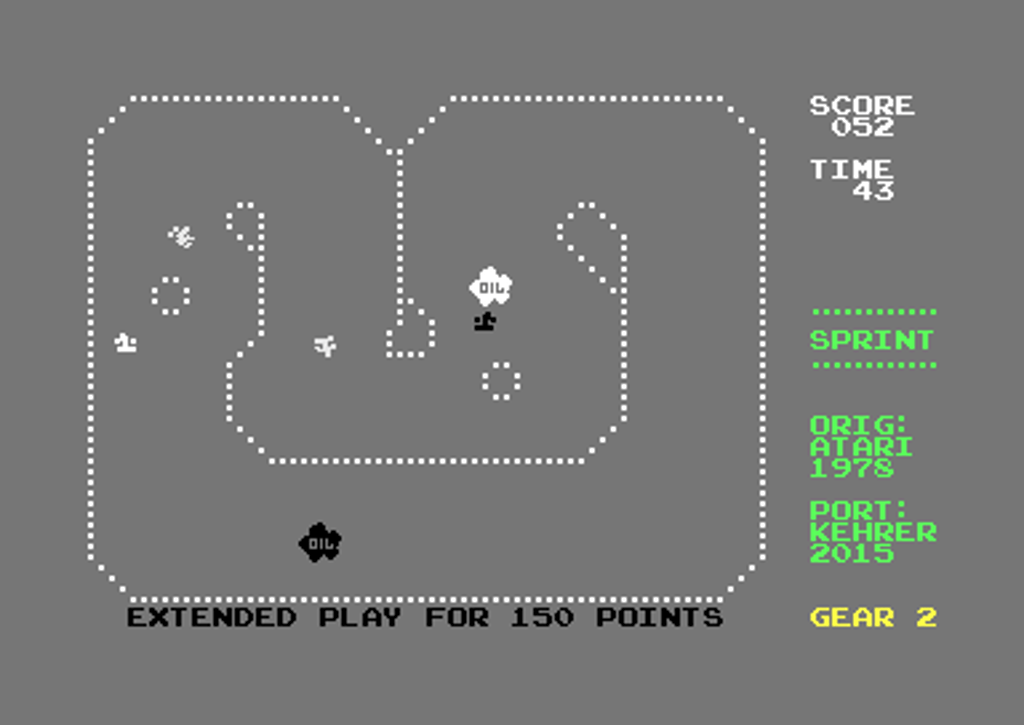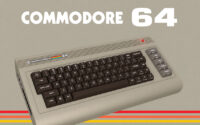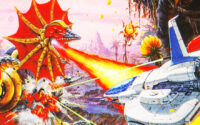Resurgence C64 – 10 Games Of The Year: 2015

If you search the Gamebase64 and look up how many games were released each year for the C64, we could probably all agree that the years between 2007 and 2011 was the first real and longer “dead” period of the Machine’s post-commercial years – A mere 54 pieces of software registered from 2007, and 101 from 2011. Not even 1999 was as bad. (With romping 179 titles.) But towards the end of the last Millennium is where that serious dip began, and many of us figured that that was that – Had time finally left our beautiful 8-bit wonder?
But at some point, in 2012-2013, something happened. The was a shift, and the tide turned thanks to newer actors on the scene like The New Dimension, Psytronik Software, RGCD, and numerous others. And 2015 marked the proper beginning of the second revival that has lasted for more than five years now – We are finally getting tons of excellent C64 software again. (Even on physical formats for those who love to collect them.) Granted, as there aren’t as many publishers in 2020 as there were in 1985, the number of titles are still nowhere near as high as during the Golden Era. But it’s always the quality that counts. We’d rather have 50 really good games than 500 Kusoge. But enough about the mobile market now, god damn it!
And fifty really good games from this five-year period is exactly what this series of articles focuses on. Or it’s more like ten “Games Of The Year” in each article and three honorable mentions. It was “already” quite difficult to pick out ten only for each year, which is another sign of the high standard of software during this second wave… It’s like that “late summer” came back and never went away…!
10 GAMES OF THE YEAR: 2015
In no other order than the alphabetical one. And we begin with the year when things seriously started moving again and a couple of beloved franchises, and genres, made a majestic return…
1. Athanor
Safar Games
A genuine Old School graphic text adventure set in an even Older School…
Except “Old Abbey” would be the correct word for the setting for Athanor. (Instead of “school”.) Since the game takes place in Southern Italy in the 12th century and everything. You play this piece of refined interactive fiction as a Franciscan monk that has been sent to this abbey to investigate strange goings-on. Something is not quite right from the very beginning, but the various secrets that are revealed during the game are even more sinister that anyone could have believed…
The early 80s graphic text adventure atmosphere lies unbelievably thick over the game from the very beginning. (That title screen alone evokes a certain feel.) The graphics are rendered in two colors – Black and white. Pure and hard core. And they’re drawn on screen like an unbelievably fast Master Koala Painter was illustrating them in real time. This is a throwback to the earliest days of these types of games as it reminds of, e.g., The Hobbit. (I’m sure someone thought of Channel 8 Software’s games as well.) Athanor has approximately fifty locations, and the verb / noun parser can interpret around 200 words. The screen is in quite perfect layouted with nothing taking up too much or too little space. Beneath the graphic-displaying window (With two ornamental monks standing on the left and right sides of it.) is the text with the brief but good location- and event descriptions. (The available exits for each location are always displayed above the command input line to make it easier to navigate around the abbey.) The solution reveals that the game can beaten in 84 turns, which is a really decent length for a game in this relatively unusual (In this day and age for sure!) genre.
The C64 conversion was made by Eric “Majikeyric” Hilaire. (From Demo / Cracker group Hokuto Force and its game development division Digital Monastery.) Like “99%” of every text adventure in existence, Athanor is silent game. But another aspect worth mentioning is Hervé “Tom And Jerry” Monchatre’s title-screen music – It’s a damn fine SID-classic inspired by Medieval music. (The tune is a couple of minutes long. And charming as hell, of course.) I get that these types of games aren’t for everybody, but for someone who is even slightly nostalgic about them could find a place for Athanor in his / her heart. It’s a very accessible game, for sure. (The instructions even reveal what words the game understands, so that you don’t need to figure them out on your own – If you don’t want to.) And who knows? This could even be the perfect introduction for anyone who is interested in the origins of home computer adventure games. Nevertheless, the love and dedication put into the game is impressive. That always goes a long way and that love hopefully rubs off on the player. — 1 Player · Keyboard · Disk (Physical + Download)
Athanor – The Awakening is the first part in a planned trilogy. News about Athanor 2 – The Legend Of The Birdmen for the Atari ST and Amiga was published at the Indie Retro News website in April 2019. Eric Safar released a video on YouTube in April 2020 about the game coming out on the Amstrad as well. (In both French and English.) Hopefully, there will be a C64 port as well at some point.
The disk image of Athanor can be downloaded for free from what should be one of your favorite C64 resources – https://csdb.dk. There’s an archive that includes the solution (in French) and two beautiful scans of the “clues” and the “plan” (Which is an isometric view of the abbey.) respectively.
2. Blap ‘n Bash
The New Dimension
How about an exciting and pulse-raising game of Breakout…?!
“How exciting and pulse-raising can Breakout be in twenty-bloody-fifteen?!”, you might ask. And: “Aren’t there already over 300 Breakout-clones for the C64?” Sure. But have you played all of them? If not – Why not try giving Blap ‘n Bash at least one go or ten? The game was coded by, who else than, Richard Bayliss. (Since this is a The New Dimension published game and all.) Bayliss also wrote the tremendously catchy soundtrack as well. He also put the various differently colored pixels on screen. (With some help from Igor Errazkin.)
On a clean and good-looking title screen, you select music or sound effects with your stick that brings joy. The Fire-button starts a new game. You will immediately notice one big difference compared to traditional Breakout with a bat at the bottom of the screen, and that’s the extra bat at the top of the screen. Extra bats have been seen in Breakout before, like for example Cascade Games’ classic TRAZ: Transformable Arcade Zone, but this additional bat moves left when the bottom one moves right and vice versa. So not only do you need your usual quick Pong-reflexes, but you’re required to switch your brain into “opposite”-mode when the ball is on the upper half of the playing area. It feels pretty crazy at first… (And you will lose a couple of balls quickly at first.. Unless you can turn your head upside down every few seconds, or something.) Right below and above your bats are force fields that can withstand the ball a number of times before they vanish. A meter in the lower right corner shows how many hits the field can take. When it’s gone, you lose a ball if you fail to catch it. (I’m sure this is familiar for everyone who has ever played a game of Breakout.)
In true Arkanoid-tradition, some bricks hide Power-ups. There are the ordinary ones that speed up or slow down the ball, but there is also one that turns the force-field into a solid wall and another one that makes the ball go right through the bricks instead of bouncing against them. One Power-up switches the in-game music into a hard thumping excellent groove that makes the screen flash in sync with the rhythm. Another one shakes the screen slightly horizontally. (So this might not be the optimal game for someone who suffers from flashing colors or quickly shifting images. But it is possible to play Blap ‘n Bash without these effects active.) To make the game even trickier, there are various moving beings on screen. (These affect the ball movement as well.) And when all bricks are gone, you are teleported to the next level. Like “all” Breakout-games since the dawn of time, Blap ‘n Bash is probably most enjoyable if you play a game or two at a time instead of grinding at it for hours. Unless you’re really on a mad roll and manage to clear level after level… — 1 Player · Joystick · Disk / Cassette (Download)
The game was reworked and released for the RGCD C64 16KB Cartridge Development Competition in 2016 as Blap ‘n Bash Revisited. It includes new some graphics, new levels, a couple of new tunes, and the game just plays even better.
Downloads are available from: http://tnd64.unikat.sk
3. Caren And The Tangled Tentacles
Prior Art
Lucasfilm Games-style games make a glorious comeback on the C64 in the eternal absence of… New, top quality Lucasfilm games…
It’s downright amazing that 8-bit software of this caliber are and can even be developed in this day and age. “Caren” is easily described as an extremely well presented and well produced adventure game. It plays wonderfully (The game’s Joystick-operated, Point ‘n Click- / icon-based interface is simply the top of the line – Improved through many games through history until it reached this exact state of perfection.), and it has outstanding graphics and exceptional sound. And here’s the twist in the story: “Caren” has absolutely nothing to do with Lucasfilm. This is Dr. Martin “Enthusi” Wendt (programming), Oliver “Veto” Lindau (graphics), and Kamil “Jammer” Wolnikowski (music and sound effects) from various Scene-groups turning in a spectacular piece of art and a technical Tour De Force. Everything about this game is excellent (It even includes a real, playable game-within-a-game version of Pong by Andreas Varga!), and the game is “almost” as long as Maniac Mansion. (I’m only going by the length of one or two playthroughs.) Plus its charm should grab hold of any genre-fan’s attention in minutes…
Caren dreams a short dream (While you in a few steps get to figure out the clever interface!) and wakes up to another day before her shift at the Science Center. But as usual, things in the world of video games tend to make any day unusual… The story and its many charming references (To Maniac Mansion, but also to a certain very popular 80s movie.) and turns should of course not be spoiled. It’s a pure joy to explore the surroundings and figure out the puzzles. (Not that I managed to figure out all of them.) It’s almost like if Lucasfilm Games continued making C64-versions of their 90s games and at the same time produced 8-bit games that played (And looked!) even better than Sierra’s contemporary games with those characteristic EGA-graphics. I say almost. Because “Caren” is in many ways even better than the real thing(s). The animations and backdrops are absolutely wonderful, and you could constantly be wondering if this is an 8- or a 16-bit game. Plus the sound effects are charming as hell. (Footsteps, people talking on the phone, etc.) Even the music (About half a dozen kicking tunes.) is brilliant. Playing the game from a cartridge / cartridge image additionally gives it a flow that’s virtually second to none. Also, the way Caren finds her way around the scene when you click somewhere, and how the interaction with the surrounding is executed – Could it ever even be improved…?! The whole game sure feels like a zenith for the entire genre. This is on a level that was totally unthinkable in the 80s and around the time of the first “Monkey Island”-game. And the “final plot twist” is that we’re still on the same exact hardware. Honestly, we haven’t really seen anything in this genre after “Caren” that outdoes Caren And The Tangled Tentacles in any way. — 1 Player · Joystick · Cartridge / Disk (Physical + Download)
Trivia: There are a couple of Easter Eggs in the software manual, like the puzzle game Assembloids (Also by Martin Wendt.), and a pretty hilarious fourth wall breaking animated sequence starring Zak McKracken. The Extras are quite easily accessed with the help of the Joystick and its Fire-button.
Additional note: The “Caren 2 [[[h0t preview]]]” was obviously not a real preview. But I guess it could have fooled… Someone?! Either way, a real “Project Caren 2” is in the works. (Because it can’t and mustn’t end this way…! 🙁 Plus it’s too good of an I.P. to begin and end with one single game.)
Grab the 2018 year “Thank You Edition” (for free) directly from https://priorartgames.eu – It’s a slightly enhanced version of v1.3 that was exclusive for backers of the project.
4. Commando Arcade
Chris Butler / Fungus / Tomaz Kac
Everyone who has ever played games on the C64 has played Commando… But have you played the Arcade version? (On the C64? – Now, we’re putting the REAL in surrealism.)
Chris Butler was given the near-impossible task of cramming Commando into one single-load program. The main advantage of this is of course a more Coin-Op-like flow between the Game Overs. While the conversion is an immortal absolute must that plays well but sounds superior to the arcade original, five levels had to be sacrificed. So that left three levels in the game. And whenever there was too much action on screen, the poor MOS 6510 had to struggle… It’s not that the original code is bad, but there was no time to optimize it before the Christmas release.
Thirty years later, four enthusiasts decided to upgrade the original and give the fans the complete version. The result was the beloved and familiar game but with an optional new soundtrack by Glenn Rune “6R6” Gallefoss, all eight levels, new graphics and animations by Steve “STE’86” Day and Tomaz “Tom-Cat” Kac, plus some significant improvements to the code (Reverse engineered by S!R.), courtesy of Fungus and Kac. And to get around the limitations of the RAM, the game had to become a multi-load deal. (Albeit an astonishingly quick one.) This glitch-free version of Commando starts with a new title screen by STE’86 accompanied by an excellent 6R6 track with the vibe. The disk includes extensive documentation with everything you’d possibly want to know about this version. (Like its 34 major improvements!) The option screen that follows has two game options: The first one lets you choose if you want to throw hand grenades by holding the Fire-button, or by slamming the Space-bar like in the original. The second option lets you turn on the new graphics and animations. (The new graphics include stuff like that animated helicopter at the beginning and the end of each level.) The other options are the Trainers. These include: Invincibility, unlimited lives, unlimited grenades, and starting level. You can also skip any level with the left arrow key and reset the high scores if you want. On the title screen, you can additionally choose to play the game with the original Rob Hubbard soundtrack (Which, for the purists, should be the only choice!) and with or without the original sound effects, or, with the new 6R6 soundtrack and with or without completely new FX. I have exactly zero issues with the new music since a “sort of” Reggae-version of the Commando-theme can be charming, but I just prefer the original any hour on the hour – It’s so extremely C64, 80s, and Commando… Still, the new tunes are excellent. (There is a handful of new in-game ones, and another new track during the Hi-score entry. And the latter isn’t a re-mix of Hubbard’s “One-Of-The-Best-Hi-Score-Tunes-Ever”. But it’s great nevertheless.)
And as soon as you press Fire and start rushing and shooting through the first level, it all feels familiar – Sans screen-flickering and other bugs. It’s perfect. An optimal version that every C64-head should play. The levels load super-quick, and I’m sure magic was involved while reworking this Classic. I doubt this could have turned out better in any way. — 1 Player · Joystick · Disk (Download)
For obvious reasons, Commando Arcade wasn’t published. Just download the “crack” by Nostalgia from: https://csdb.dk or http://gb64.com. And play it.
5. Ghosts ‘n Goblins Arcade
Chris Butler / Erhan Alparslan / Geert Verschueren / Tomaz Kac
Everyone who has ever played games on the C64 has played Commando… And he or she has also played Ghosts ‘n Goblins… But… (Yeah, you know where this is going.)
Because of the C64-wizard Chris Butler-connection, Elite’s Ghosts ‘n Goblins and Commando on this machine are two totally inseparable games. And both “suffered” a similar fate when the Coin-Ops had to be converted into one program at a handful of dozen Kilobytes on an 8-bit platform. So when you have done Commando justice with Commando Arcade, the next logical step is automatically to work some magic on Capcom’s original hair-tearer Ghosts ‘n Goblins…. And that’s exactly what Nostalgia did. Before another dose of 8-bit magic, we’re given another lovely title screen by STE’86 and the option to read through the extensive documentation. (Complete with a visual list of weapons and monsters. And information. Probably some new stuff that you didn’t know too.)
And since the standard was raised to such a bloody high level with Commando Arcade, Ghosts ‘n Goblins Arcade couldn’t likely be anything lesser. This version is “pretty close to the size of the Arcade” (Four times bigger than the original C64-version, in other words.) with additional and expanded levels. (Some were infamously and completely missing in the original.) The docs list closer to 30 major improvements / features, and nothing has been left to chance. Everything you see on screen has been remade to resemble the original as closely as possible, and therefore, this game too is now a multi-load one. And it’s just as optimized and fast loading as Commando. (Levels load and reload in mere moments.) Tom-Cat designed the new maps, created the level editor, fixed a ton of bugs, and optimized the game code. STE’86 and Carl Mason did most of the graphics and the new designs, Glenn Rune “6R6” Gallefoss and Thomas Egeskov “Laxity” Petersen provided a whole bunch of new grooves (Lovely covers of the original Coin-Op music and a new Hi-score tune. Gratifyingly enough, Mark Cooksey’s remixed in-game- and Hi-score music made it to the Arcade version as well.), and Sorex and Mase did additional work in various departments.
Additionally, the game has seven trainers for those who can’t take the heat. (Invincibility, unlimited lives, unlimited time, starting level, “level skip”-key, starting weapon, and “weapon select”-keys.) You can also reset the Hi-scores and choose if you want to play the new or the original version of the game. This from ground up re-make includes not only a hell of a lot more Ghosts ‘n Goblins than the original, but also the cut-scenes (Like the one at the beginning where Satan kidnaps Arthur’s sweetheart and flies away.) and a map that shows you far you are into the game. (The map is displayed after each level and after, what else than, every untimely death.) And it’s the same, good old and insanely tricky game that we all love and… Certainly have mixed feelings about. And some of us love it for a good while until that love gradually turns into anger with each lost life and Game Over… (There are no unlimited continues either!) But then, the anger bordering on hate reverts back to love after some time has passed and the blood has stopped boiling. Fantastic. — 1 Player · Joystick · Disk (Download)
Believe it or not – Ghosts ‘n Goblins Arcade wasn’t published either. But it can be downloaded from: https://csdb.dk or http://gb64.com.
6. Heroes & Cowards
Protovision / Out Of Order Softworks
The Legendary Byteriders return…
The Byteriders (Founded by C64-sceners back in the 80s.) were the guys behind the rather humorous “wrong guy in the wrong place”-cult adventure game Crime Time that came out in 1990 via Starbyte Software. In 1992, CP Verlag / Golden Disk 64 published Byteriders’ amazing and unfairly “forgotten” follow-up Brubaker. (Brubaker was never officially translated from German to English, but Antitrack was kind-hearted enough to produce an English version.) And after Brubaker, I bet most fans believed that that was the last we’d ever hear from The Byteriders…
But more than two decades later (!) comes this “long lost magnum opus” called Heroes & Cowards – The Pentagram Of Power. Thanks to Out Of Order Softworks (The “Archaeological Expedition Party” that resurrected and finished the game.) and Protovision, the game didn’t remain unreleased and, even more unfairly, unseen. However, Byteriders’ return to the C64 was soon overshadowed by an irreversible tragedy when co-programmer Steve “Peter Parker” Kups died of heart failure, merely 45 years young. (On December the 26th.) Kups coded Heroes & Cowards together with Sebastian Broghammer. (The duo that programmed the aforementioned Crime Time as well the text adventure The Yawn from 1990.)
Heroes & Cowards (Which incidentally is Byteriders’ sixth game.) is one more “wrong guy in the wrong place”-adventure, but this time, it takes place in a Fantasy-setting. You have very involuntarily ended up in a realm called Dartenwood where everybody and every living thing has turned into stone. (Maybe this really is an original “right guy in the very wrong place”-story?) Your world-saving mission is to find and get five rubies for the Pentagram of Power. This particular pentagram is said to be able to reverse the curse of petrifaction…
Heroes & Cowards operates like a sort of a “Point ‘n Click”-based text adventure where you select verbs and nouns from a menu to interact with the game world. And it’s an ingenious way to design an adventure for sure. You can tell that the developers knew what they were doing. Everything is within two keystrokes or two presses of the Fire-button away. Other than that, the trademark Byteriders humor is intact, and the story is really enjoyable with its original atmosphere and presence. (Plus multiple pop-cultural references.) Phillip Bergmann handled the graphics, and SID-wizard Stefan Hartwig wrote the game’s absolutely fantastic soundtrack. It’s an exceptional bunch of suitable tunes that aren’t just mystifying and moody (And uplifting in the next moment.), but they also “happen” to be amazingly catchy. A graphic text adventure game with music of this high quality is more or less “unheard” of, and it beats a forgettable orchestral “Hollywood movie score” any day. (Okay, so it would really be neither “Hollywood” nor forgettable if it was done on the C64.) Either way, Heroes & Cowards turned out to be an adventure game of top class, and we can only be grateful that it was released. Highly recommended. — 1 Player · Joystick / Keyboard · Disk (Physical + Download)
Just like many Protovision-published games, Heroes & Cowards is available via https://protovision.itch.io. For eight bucks, you get the 40-page manual “The Book Of Five” (Well worth reading as it contains tons of info and trivia including interviews as well as the story behind the game’s journey from the attic to the public!), the soundtrack (By Taxim and Stefan Hartwig.) in MP3-format (Twelve tracks with a playing time of 50 minutes.), and the game files prepared for both Windows (WinVICE) and Mac OS. (And for the Machine, of course…!)
7. Jam It
RGCD / Psytronik Software / Throwback Games
It’s two-on-two Basketball time…!
This sub-genre to the Basketball-games with arcade-style gameplay on one half of the court hasn’t exactly been done to death. (Neither were the handful of simulations. Only the statistics-based ones were left in time.) So it was kind of nice of Throwback Games to bring back the “Two-On-Two”-variant – Especially when it’s one that’s so well done. Because there is way more than meets the eye here. If you read the manual / instructions, you could almost believe that the game was designed for controllers with at least four buttons. But all you need is one…
Like all well-designed sports games (Or games regardless of category, for that matter.), you get to select between a couple of options before it’s time to dunk some balls. If you don’t play versus other people that you eventually might call less than flattering names, you choose between four difficulty levels for the CPU-controlled players. Funnily enough, “Hopeless” almost accurately represents my real Basketball-skills, and “Brutal” means that you have to know the controls in a coma and predict every single move that the opponents make… Next, each player chooses team by pressing the Fire-button and pushing the Joystick left or right on a simple selection screen. (Which slightly reminds of the one in Pro Evolution Soccer.) If you play alone, you get to choose whether the second player is controlled by the CPU or yourself. And finally, you’re playing Basketball. The playing itself is divided into Offense (Shoot, pass, or dunk.) and Defense. (Steal / Intercept a pass, Jump / Block Shot, and Switch Players / Defensive Switch.) There is also the Highlight Shot Mode (For stylish shots in slow motion. You get three per game.), Post-Ups, Foul Shots, and instant replays. The players also have energy-bars, so you can’t run around a throw tirelessly until the bell sounds. (Standing still restores energy, naturally.) Additionally, Jam It has a unique feature – You don’t merely control Basketball-players, but also the cheerleaders during the Half-time Show…
Throwback Games definitely lives up to their name here. Programmer Leigh White created a genuine one. If you played all the classics like Street Sports Baseball, One On One, Fast Break, and Commodore’s own International Basketball, you’ll be right at home with Jam It. (Plus, there are unlockable features in the game.) It’s surprisingly sophisticated, and all the options guarantee hours of excitement, sweating and fun. (Or cold-sweating, swearing, and turning the game off forever – This all depends on your preferences.) Who the hell needs to get out on a real Basketball court anyway? Jam It is very well presented and programmed. The menus (Complete with instructions.) are accompanied by a pleasantly sleazy Jazz-number. You can more or less feel the big city atmos. (The seriously good loading music was done by Joachim Wijnhoven and Roland Hermans.) The sound effects are as good as you’d expect from a sports game with crowd- and Basketball noises filtered through the SID-chip. No rousing in-game music, sadly… (Or there would’ve had to be a series of tunes if you don’t want to get fed up with them after a couple of games.) — 1 – 2 Players (Simultaneously) / 3 – 4 Players (Simultaneously with Joystick adapter) · Joystick · Disk / Cassette / Cartridge (Physical + Download)
Additional note: If you play Jam It on a computer / Raspberry Pi and an emulator, you don’t of course need the Joystick adapter to play four players at the same time. You can just map the Joystick Userports for any configuration you want.
Jam It is available for $3.50 at: https://throwbackgames.itch.io/jam-it.
8. P0 Snake 64k
RGCD / Antonio Savona
Snake – With a twist… (Or at least with a twisting tail!)
If you feel that your video game addiction hasn’t driven you insane enough, you just have to load up Antonio Savona’s P0 (That’s “P. Zero”.) Snake and feed it some more – It’s good stuff for the reward system… Controlling a snake and eating the dots that make it grow is a concept that feels as original as arcade games themselves. And its history goes back to 1976 with Gremlin (No, not Gremlin Graphics Software – The San Diego-based company founded in the early 70s.), and on the C64, there are at least two hundred “clones”. Two, three, or so still seem to be produced every year, but one variant that took the whole genre to another level was P0 Snake in 2014.
Like many other truly great games during this C64 resurgence, the game competed in the RGCD C64 16KB Cartridge Game Development Competition before it was picked up by RGCD and published in 2015. But it originated way earlier – The late 80s. For various reasons, the game wasn’t finished until a quarter of a century later…! (Mr. Savona has written an approximately 1600 words long Post-Mortem in the manual for the game.) As for that “other level”, then… In traditional snake, you move in 90 degree angles and have to avoid crashing into your own tail. In P0 Snake, you rotate clockwise – Automatically and without having to touch one single button or key. Holding down the Fire-button changes the rotation to counterclockwise. So to move in a somewhat straight line, you need to tap the Fire-button quickly and very repeatedly. This essentially means that 90 degree turns are impossible to make. The Fire-button is also the only control you use in the game. And as “always”, it’s way easier than it looks. On the game’s thirty levels, you also have your walls, moving objects, and other obstacles. The moving objects bounce against your tail and does no harm, but if they hit your head (Or if you yourself collide with a wall or an object.), you lose one life. (Plus you aren’t allowed to munch on your own tail either.) The P0 Snake’s consumable dots are pre-programmed into the levels and appear in the same positions every game. (The game would probably have turned virtually unplayable and unfair had they popped at random all over the place. The dots can still materialize on your tail, though.)
The levels reference various Classics like Pong, Pac-Man, Space Invaders, etc. (The only level that was deleted due to its crazy difficulty level was the Tetris one that actually had you playing Tetris in the background while the snake chased dots!) On screen is a level-, dots remaining-, and a life counter. Ilkka Sjöstedt illustrated the absolutely beautiful intro screen. And Aldo Chiummo wrote a catchy in-game tune. (P0 Snake also features sampled speech.) P0 Snake is brilliant in its simplicity. But the graphics have unlimited charm. — 1 Player · Joystick (Fire-button) · Disk / Cartridge (Physical + Download)
The final version of P0 Snake can be downloaded from https://rgcddev.itch.io/p0-snake. It’s free (Like in “Name your own price”.), but you can always support the developers by throwing in a couple of bucks. (The game also comes with a Code Sheet that you can print out and write the codes on.)
9. Rocket Smash EX
RGCD / Psytronik Software
Who knew that escaping work could be so difficult?
Normally, you could just exit the place, go home and play video games, but in Rocket Smash EX, it’s a bit more complicated. You have to assemble a rocket, fuel it, land a couple of times during the trip… Only to get dragged into trouble again “thanks” to a combination of your onboard computer, bad luck, and yourself. So that home is five worlds away, and each world has four single-screen levels viewed from the side… If nothing else, you’ll be thanking the genius who invented Auto-Fire – Quite possibly on some of the earliest screens. Because god damn, do you have to blast yourself out of sticky spots every two seconds. (And move like a wasp on speed with the help of your jet-pack.)
The first stage in each world is where you put together that rocket and fuel it. The rocket is in three pieces on screen. The first piece is already on the ground, and you have to retrieve the two other pieces (in correct order) and drop them above the first one. The drop is automatic as long as you’re carrying the part and position yourself right above the original part. Then, fuel, oxygen, and cash containers start falling from the sky. You have to grab the fuel drums and drop them above the rocket. This gradually fuels up the rocket. When it’s full, i.e., the rocket is color tinted instead of gray, you simply move up to the rocket and take off to the next stage. The next three stages are about refueling while blasting meteorites and various types of aliens. The screen is constantly crowded, so you’ll get warm soon enough. And your oxygen frequently needs refilling. Your only real advantage is that the sides of the screens are warp zones. Your laser blasts warp from one side of the screen to the other as well. This is good for killing the nasties on the left side of the screen by firing “outside” the right side. Get skilled enough and you’ll be able to catch the containers mid-air while blasting alien bastards from both directions. (Since you can only fire left and right.)
Rocket Smash EX has three difficulty modes – Easy, Normal, and Hard. And then, Easy mode isn’t particularly “easy” anyway. But it’s a good way to get into the flow of the game. There is also a Story- and a Loop Mode. The Story Mode includes funny cut-scenes and a nice outro, while Loop Mode has you playing level after level for as long as you live. The audio in Rocket Smash consists of good sound effects, sampled speech, and an oddly relaxed and cool soundtrack by the game’s respective programmer and graphics artist John Christian Lønningdal and Saul Cross. I guess a hectic, 200 bpm, SID-techno OST would have given the player an even higher blood pressure… Rocket Smash was originally yet another entry in the RGCD C64 16KB Cartridge Game Development Competition, and it was developed in 2013. The extended and final version came out in early 2015. — 1 Player · Joystick · Disk / Cassette / Cartridge (Physical + Download)
Free download from: https://rgcddev.itch.io/rocket-smash-ex.
10. Trance Sector Ultimate
RCGD / The New Dimension
The Ultimate version of Trance Sector…
The original Trance Sector was released back in 2012 as one of RGCD’s first games that they co-published with the already well established Psytronik Software. (I believe their first release was Simone Bevilacqua’s Quod Init Exit in 2010.) Commodore Free published the “Competition Edition” of the game one year later, and here is the Ultimate version with both games reworked and polished in association with Kiken Corporation and Psytronik.
Trance Sector actually has a back story (About deactivating extraterrestrial nuclear pods that threaten the Solar System.) that you can read in the documentation, but the game is basically a delicate mix of Collect ‘Em-Up and “Avoid ‘Em Constantly Or Else”. Both the original Trance Sector and the Competition Edition have 32 levels each. You complete a level by moving your ship, the EDF Interceptor, over each one of the red pods on tiles placed on a 18×9 single-screen grid. This causes a chain reaction that blows some shit up. The number of tiles and the layout (The pattens that the tiles are arranged in.) varies from level to level, and some tiles also carry stuff like Electronic Stabilizers, Panic Trap Buttons, and Magnetic Belts.
As you can move freely around the grid, it would be a bit too easy if there weren’t any dangers, wouldn’t it? Enter the four missiles that travel non-stop back and forth along each side of the screen. These missiles automatically launch towards you every time your X- and Y-coordinates match two of the missiles’ coordinates. So if you are on tile 9,6 (With 0,0 being the top left one.) and one of the missiles on the Y-axis passes the 6th tile when another missile on the X-axis passes the 9th, you’d better get out of the way. It sounds easier than it is. (You’d really benefit from an extra pair of eyes at times!) Especially when you fly over a Panic Trap Button, which causes the missiles to start moving faster. Your only protection is the “immortality” shield that is activated for a couple of seconds at the beginning of each life / level. Shields can also be picked up as pods wherever they may appear. Other Bonus-items include points, or, bubbles with letters that eventually spell the word EXTRA at the top of the screen. (And the bomb that clears the screen of the missiles momentarily is always so very welcome!) Trance Sector, in any version, is another one of those games that’s very easy to get into, and quite hard to turn off… (And after just one go, it’s impossible… It’s just one of the facts of life.) The game includes a very good dance-oriented soundtrack. (“Level complete”- and “Game Over”-jingle plus a couple of different in-game tunes.) You can also switch to sound effects on the title screen. — 1 Player · Joystick / Keyboard · Disk / Cartridge (Physical + Download)
The original version is much more unforgiving as the levels reset every time you die. (In Trance Sector Ultimate, you just lose a life.) The game has an additional Easy Mode, a Challenge Mode, and a separate Music Demo with all the game tunes.
This game too is a free download from: https://rgcddev.itch.io/trance-sector-ultimate.
…
How about that? Some pretty heavy titles in this list, eh? It’s almost like a leap into a parallel dimension where we got optimal versions of Commando and Ghosts ‘n Goblins. Either way, these are ten games that would’ve gotten numerous awards and endless praise (Especially “Caren”…!) from all the relevant magazines had they been released in the 80s. And this was just the beginning of the new era…
Still, we’ve got to have three honorable mentions – Two that basically made it to the list above, one that wasn’t that far away either, and one that holds a very special place in many old arcade players’ hearts…
Awakening (Georg Rottensteiner / The USER / Spider Jerusalem) – There wasn’t just one high quality Lucasfilm Games-style game released in 2015, but two. Awakening has a lovely redhead in full MacGyver-mode when a simple parcel delivery to TechCorp, Inc. doesn’t quite go as planned. You walk around the premises, select commands from a list with the Joystick, and combine the relevant verbs and nouns. (The latter pop up on screen when you’re close to an object or have it in you inventory.) It’s a system perfected to damn near 100% for games like this. While Awakening isn’t as long as, e.g., the obvious comparison (Maniac Mansion), there is still plenty to do and a loads of fun problems to solve. The more fitting, contemporary comparison Caren And The Tangled Tentacles is a longer game, though. Awakening also features some original and memorable title-screen music, luscious animations (Oh, yeah!), and an excellent atmosphere throughout. So definitely give it a try – Even if it’s one big tease and very possibly only makes you wish that there was a second (And a third!) chapter / part. Awakening would’ve easily been one of my Top 3 Games Of The Year 2015 had that been the case – Along with “Caren”. But both are genuine gems…! (And we can only dream about a sequel…)
Bruce Lee II (www.bruneras.com) – It’s like that sequel for the cult-flick über alles that all the die-hard fans with unlimited patience have been waiting for… Sure, in this case, it took 31 years, but here it is…! Bruce Lee II. Imagine if there was another 70s “Enter The Dragon”-movie (Or “Bloodsport”, if you prefer something that’s from the 80s.) that got released in the 2010s. This is pretty much the 8-bit equivalent to that phenomenon. If you’re a fan of the original game, it’s not highly unlikely that you’ll love this (unofficial) sequel from the first fight on the first screen. It plays a lot like the Ron Fortier’s classic – With some differences. This time, Bruce has to rescue his sister from some evil son of a bitch whose temple has been constructed by the same sadistic architects who built the sorcerer’s one in the original game. So that’s 28 screens of more or even more fiendish traps and environmental puzzles that await Lee. And it would have been a crime to exclude the clever two-player mode with the Ninja, plus the original John A. Fitzpatrick tune on the title screen. (The damn fine intro music was composed by Jonas Hultén, who also programmed this version.)
Time Of Silence (Claus) – And you can never have too many atmospheric and endearing top-down RPGs with a captivating stories, good mechanics / interface, and controls that never get in the way. Claus’ a.k.a. “Zeit Der Stille” is one of those, and it was translated from German to English the same year it competed in the Forum64 Game Competition under the “Adventures” category. (It finished second – Unsurprisingly after Caren And The Tangled Tentacles.) After the sinister and apocalyptic back story you can jump right into Time Of Silence – Everything is within reach via the Joystick and its Fire-button, and you should almost instinctively know how to play this… Claus did all the graphics, sound, and programming, and that’s goddamn impressive for a game like this. Okay, so it can be completed in twenty minutes, but that doesn’t lessen anything. Time Of Silence is just like a slice of utterly delicious cake – Neither too big nor too small… After a while, you wish that there would’ve been some more. But the best part of all is that Time Of Silence 2 is under development…! (Check out the site: https://acoustic-velocity.com for tons more info.)
And finally, a quite an honorable mention:
Sprint 1 (Norbert Kehrer) – Yes. Sprint 1…! This Atari 1978 Coin-Op could be found in the corner of almost any place that sold hot dogs and burgers back in the days… It aged pretty quickly and– Disadvantageously– Already during the early 80s, and when fellow old farts basically just remember how annoyed they were at the CPU-drivers, it’s just pure nostalgia talking. I don’t think I have ever, IRL, heard anyone say anything overly positive about Sprint 1. (Or “Sprint 2” as the two-player variant was called.) But… Kehrer’s version is a bloody good and accurate port… It looks and sounds like it should, and it’s every bit as infuriating to compete against the other cars as it is in the original…! Still, there is no denying it – Sprint 1 has a place in video game history, and we’re glad that it finally is in the Public Domain on the C64.
Tune in next week, on June 8th, as we move one year ahead to 2016 and continue to bring attention to top quality Games Of The Year from the Resurgence…

